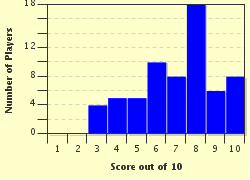Quiz Answer Key and Fun Facts
1. Jeremiah Dixon, whose father owned a coal mine, was born into a wealthy family. What religion did they practice?
2. How was Dixon making a living prior to being hired to draw what became known as the Mason-Dixon Line?
3. Which of the following statements about Jeremiah Dixon is NOT true?
4. What did Charles Mason's father do for a living?
5. Where was Charles Mason working before being hired to draw what would become known as the Mason-Dixon Line?
6. With what project did Charles Mason work for most of his adult life?
7. What was the first joint venture that helped to forge the Mason-Dixon partnership?
8. Which two colonies were involved in the boundary dispute that eventually brought Charles Mason and Jeremiah Dixon to America?
9. With which native American tribe did Mason and Dixon come into contact as they were surveying what would eventually be called the Mason-Dixon Line?
10. A modern survey of the Mason-Dixon Line by the Mason-Dixon Line Preservation Partnership has revealed that the original line is surprisingly accurate.
Source: Author
ponycargirl
This quiz was reviewed by FunTrivia editor
bloomsby before going online.
Any errors found in FunTrivia content are routinely corrected through our feedback system.

